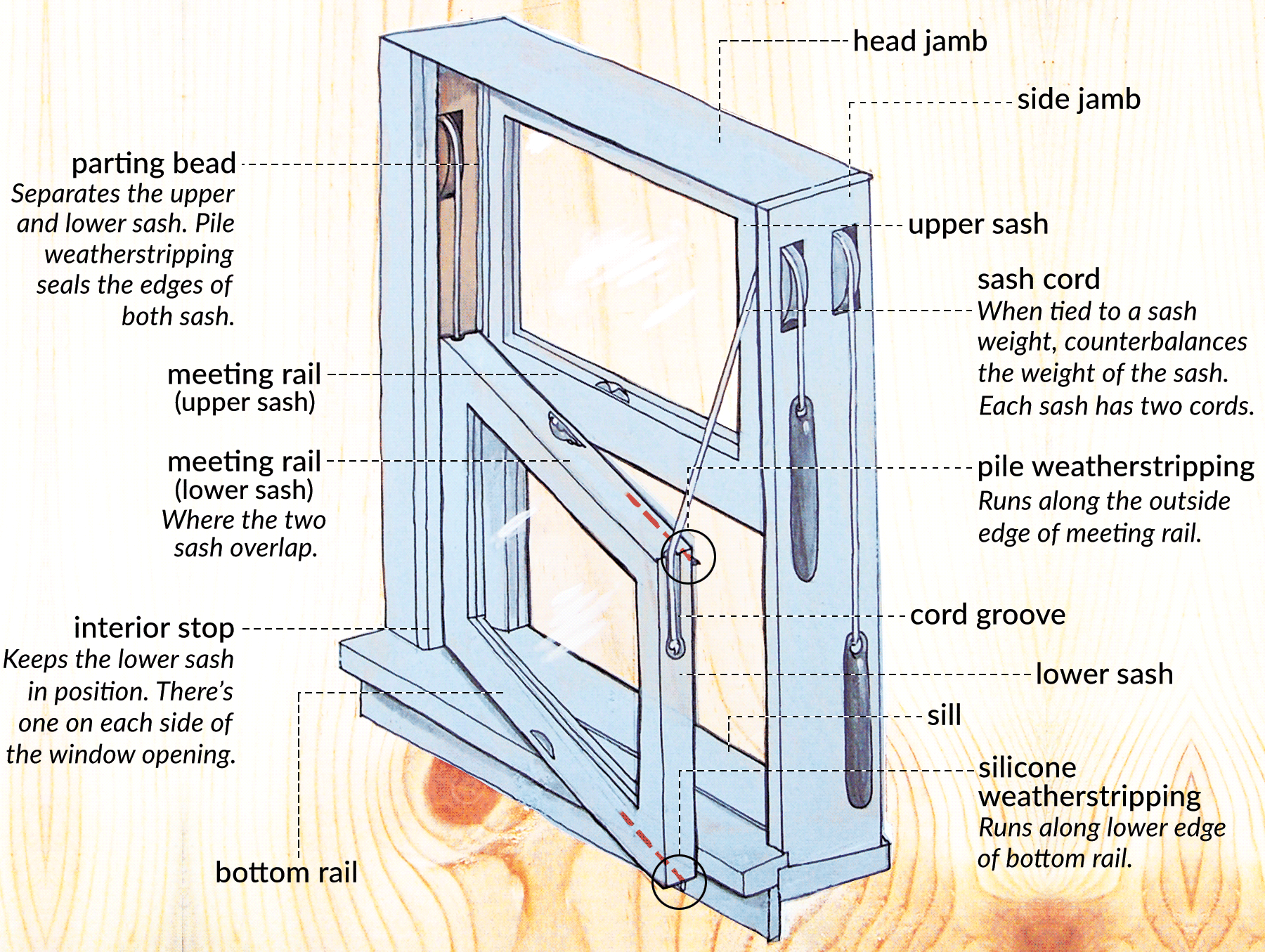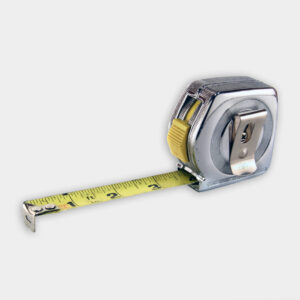
We may be compensated if you purchase through links on our website. Our team is committed to delivering honest, objective, and independent reviews on home products and services.
More
Project details
Skill
1 out of 5Easy
Cost
Estimated Time
Old windows can be a significant source of heat loss in homes, leading to increased energy bills and decreased comfort. However, replacing these windows isn’t always necessary or desirable, especially in historic homes. Weatherstripping offers an effective solution to make your existing windows more energy-efficient without compromising their charm or architectural integrity.
Weatherstripping, more formally known as window weatherization, is the process of sealing gaps and cracks in windows to prevent air leakage. This simple yet effective technique can significantly improve your home’s energy efficiency, reduce drafts, and prevent moisture infiltration.
This guide will walk you through the process of weatherstripping double-hung windows and since single-hung and double-hung windows differ, this process is specific to double-hung windows.
Essential Tools and Materials for Weatherstripping
Before beginning your weatherstripping project, gather the necessary tools and materials to ensure a smooth process. To follow the step-by-step guide below, you’ll need a weatherstripping kit you can find at big-box hardware stores and the following tools:
 Flat pry bar
Flat pry bar Putty knife
Putty knife Router
Router Slot-cutting bit (1/8-by-3/8-in.)
Slot-cutting bit (1/8-by-3/8-in.) Nippers
Nippers Tape measure
Tape measure Chisel – 3/8-in.
Chisel – 3/8-in. Pencil
Pencil Miter saw
Miter saw Hammer
Hammer Bar clamps
Bar clamps
Step-by-Step Guide to Weatherstripping Double-Hung Windows
Old-fashioned double-hung windows are so called because they have two sashes, each suspended from a pair of cords or chains with weights on one end. They can be easily taken apart, weatherstripped, and put back together.
When Kevin O’Connor, the host of This Old House, renovated his 1894 Queen Anne, he never once considered replacing its original double-hung windows with modern ones. “It would kill me to put new windows in this house,” he says.
For one thing, the handcrafted sash and blown-glass panes would be costly to replace — as much as $1,000 apiece — and substituting anything less would destroy much of the old place’s charm. Still, he was dismayed by how much air leaked in during the winter, even with outside storm windows in place.
To fix the problem, he needed a product that was both effective and unobtrusive. “I didn’t want anything that would change the way the old windows look,” he says. The solution: a simple weatherstripping kit that uses the same types of seal found in modern windows and is practically invisible.
For about $80 and an hour’s installation time per window, Kevin got the leak-free performance of a new unit while saving a valuable piece of his house’s history, as well as dollars off his heating bill. “The wind is blowing outside,” he says, “but the drafts are gone.”
Anatomy of Double-Hung Windows

Step 1: Pry Off One Inside Stop

With a utility knife, break the paint film (if any) by scoring along the joints where the stop meets the side casing and the sill. Remove any screws holding the stop to the jamb.
Insert a stiff putty knife in the joint about halfway up the window opening. Gently bend the stop (as shown) and insert a pry bar in the gap above the knife.
Work the two tools down toward the sill, putty knife in the lead, until the stop is free. Pull any finish nails out through the back of the stop, then set it aside.
Step 2: Take Out the Lower Sash

Raise the sash slightly and swing it out on the side where the stop was removed.
Pull the cord out of its groove and tie a figure-eight knot in one end to keep the cord from being pulled down into the weight pocket. If the sash has chains instead of cords, insert a nail through a link instead.
Step 3: Pull the Parting Beads

Using a utility knife, score the paint (if any) on both sides of all three parting beads.
Grab each parting bead on one end with nippers or locking pliers and pull it out of its dado, the flat-bottomed groove in the jamb. Move the upper sash as needed to get a good grip. If the upper sash is inoperable, pry out the beads with a chisel, taking care not to gouge the sash.
There’s no need to remove the upper sash. Its weatherstripping is on the replacement parting beads you’ll install later.
Step 4: Rout the Meeting Rail

Place the sash on a padded worktable with the exterior side facing up. Clamp the sash so its meeting rail projects a few inches past the edge of the table. Remove the sash lock and set aside.
Chuck the slot-cutting bit into the router and set it to cut 3⁄8 inch from the router base (a bearing controls the bit’s cutting depth). Hold the router base firmly against the top edge of the meeting rail and cut a groove from left to right.
Step 5: Rout the Bottom Rail

Unclamp the sash, rotate it so its bottom rail is closest to you and overhanging the table, then reclamp.
Hold the router’s base firmly against the rail’s face and cut a groove from left to right.
Pro tip: Protect surfaces from being scratched by the base of a router, jigsaw, or circular saw by placing a strip of low-stick painter’s tape on the workpiece.
Step 6: Weatherstrip the Double Hung Window

Press the silicone weatherstripping, barbed edge first, into the groove routed into the bottom rail (as shown). Take care not to stretch the strip as you insert it.
Insert the pile weatherstripping into the meeting-rail groove.
Use a utility knife to trim the ends of each piece of weatherstripping flush with the outside edges of the sash.
Step 7: Replace the Top Bead

Lower the upper sash and measure the length of the dado in the head jamb. Mark that measurement on the shortest parting bead in the kit (shown). Cut it to length.
Tap the bead into its dado with the pile weatherstripping facing out.
Step 8: Cut the Side Beads

Mark the jamb where it meets the horizontal centerline of the sash’s meeting rail (shown). Measure up from that mark to the top bead and down from the mark to the sill. Transfer those measurements to the replacement bead, starting from the bead’s center; where the weatherstripping on one side ends and the stripping on the other side starts (the strips on the upper part of the bead should face out).
Trim the top end of the bead square; trim the bottom end to match the angle of the sill. Repeat for the bead on the opposite jamb.
Pro tip: If the rails don’t meet, remove the weatherstripping from the bottom rail and plane down its bottom edge. Then rerout the groove and reinsert the strip.
Step 9: Tap in the Side Beads

The fit should be tight enough to hold them in place. If it isn’t, drill, then tack the bead in place with a few 3⁄4-inch wire brads. Reinstall the sash, stops, and sash lock.
When you’re done, the sash should slide up and down smoothly and line up at their meeting rails.
Maintaining Weatherstripped Windows
Proper maintenance ensures the longevity and effectiveness of your weatherstripping efforts. To keep your weatherstripping in good condition, perform these checks annually:
- Visually inspect all weatherstripping for signs of wear or damage.
- Test for drafts using a candle or incense stick on a windy day.
- Check that windows open, close, and lock properly, particularly after painting the windows from the outside or inside
- Clean weatherstripping with mild soap and water to remove dirt and debris.
When to Replace Weatherstripping
Replace weatherstripping if you notice:
- Visible gaps or cracks in the material
- Hardening or brittleness of the weatherstripping
- Persistent drafts despite proper installation
- Difficulty in opening or closing windows due to worn weatherstripping
Timely replacement ensures continued energy efficiency and comfort.
Remember, regular maintenance and timely replacement of weatherstripping materials are key to long-term effectiveness. Whether you choose to DIY or hire a pro, the investment in weathertight windows will pay off in reduced energy bills and a more comfortable living space for years to come.
Source: https://www.thisoldhouse.com/windows/21017462/making-windows-weathertight
 windowarea.com
windowarea.com











